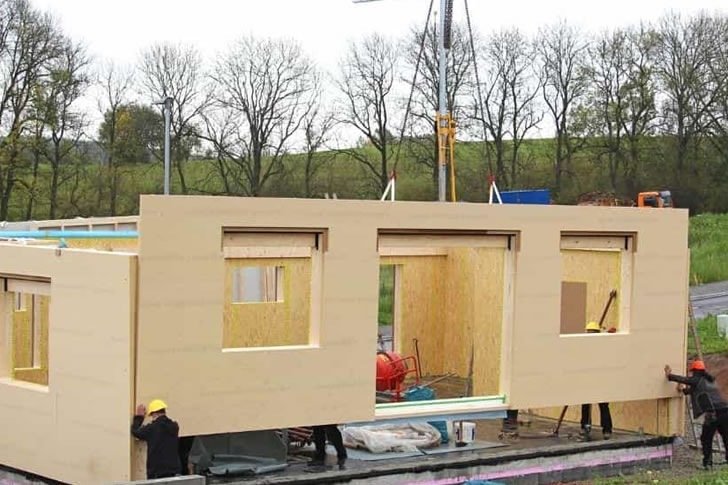Understanding the Cost Effectiveness of Prefabricated Homes
As the demand for affordable, flexible, and sustainable housing continues to grow, prefabricated homes are gaining attention as a viable solution. These homes, often referred to as prefab, are manufactured off-site in advance, usually in standard sections that can be easily shipped and assembled. Understanding the cost-effectiveness of prefabricated homes not only requires an analysis of their initial costs but also their long-term financial benefits.

The Upfront Costs of Prefabricated Homes
One of the major attractions of prefabricated homes is their potential lower upfront costs compared to traditional on-site constructions. Generally, the cost of building a prefab home ranges from $180 to $220 per square foot, which often includes the core structure, transport to the build site, and assembly. In contrast, site-built homes can vary significantly, but typically start at $150 per square foot and can go much higher depending on the location, materials, and design.
Furthermore, a substantial amount of the savings from prefab homes arises from shorter construction times. The controlled factory environment in which these homes are built allows for faster assembly and minimizes delays due to weather. According to a report by the Modular Building Institute, construction of prefab homes can be 30% to 50% quicker than site-built homes. This time efficiency translates to reduced labor costs and quicker occupancy, offering significant economic advantages to homebuyers.
Quality and Customization
In the past, prefabricated homes were limited in design and customization; however, advances in technology have greatly expanded these options. Modern prefab homes now offer a myriad of architectural styles and can be customized to meet individual preferences for layout, design, and finishes, all without a steep increase in cost. Structurally, prefab homes are required to adhere to specific regulations and standards that often surpass those of traditional site-built homes, leading to better quality control.
This increase in quality often results in better energy efficiency, which is a critical component in the overall cost-effectiveness of prefabricated homes. Many manufacturers specialize in creating environmentally friendly homes with tight seams and built-in green technologies, such as solar panels and high-efficiency windows. According to a study by the U.S. Department of Energy, energy-efficient homes can save homeowners 20% to 30% annually on energy bills, proving a continuous financial benefit.
Long-Term Savings and Value
The longevity of prefabricated homes has been a topic of debate, but with modern technologies and improvements in construction materials, these homes are now designed to last as long as traditional homes. The materials used in prefab homes are often the same as, or superior to, those used in standard construction, which adds to their durability. Furthermore, the factory setting of prefab construction lends itself to more consistent and precise building practices, which can enhance the overall quality and lifespan of the home.
Insurance costs for prefab homes can also be lower. Due to their robust construction and fire-resistant materials, many insurance companies offer lower premiums for these homes compared to traditional wood-frame construction. Additionally, the modular nature of the design allows for easier and cost-effective upgrades or repairs, further enhancing their long-term value.
Resale Value and Market Trends
Initially, prefabricated homes did not hold their value as well as traditional homes. However, perceptions have shifted dramatically with the introduction of higher quality and aesthetically pleasing prefab designs. Today, well-maintained prefab homes can appreciate in value similarly to their on-site built counterparts. The growing awareness of environmental concerns and the trend towards sustainable living have also boosted the appeal and resale value of prefab homes.
Current market trends indicate a bright future for the prefab housing sector. With a compounded annual growth rate (CAGR) projected at around 6.5% between 2020 and 2026 globally, the industry is set to expand significantly. This growth can be attributed to the increasing recognition of prefab homes as cost-effective, environmentally friendly, and adaptable to various lifestyles and budgets.
Conclusion
The cost-effectiveness of prefabricated homes is influenced by a range of factors including shorter build times, reduced labor costs, and lower long-term maintenance and energy costs. With advancements in design and technology, these homes no longer compromise on quality or aesthetic appeal, position themselves as a smart choice for potential homeowners looking for affordability without sacrificing performance or comfort. As market acceptance continues to grow and manufacturing processes improve, the role of prefabricated homes in the global housing market is likely to expand even further, making them a prudent choice for many. Whether you are an investor, a first-time homebuyer, or simply looking to downsize, prefabricated homes offer a robust, sustainable, and cost-effective housing solution in today’s market.







Recent Comments